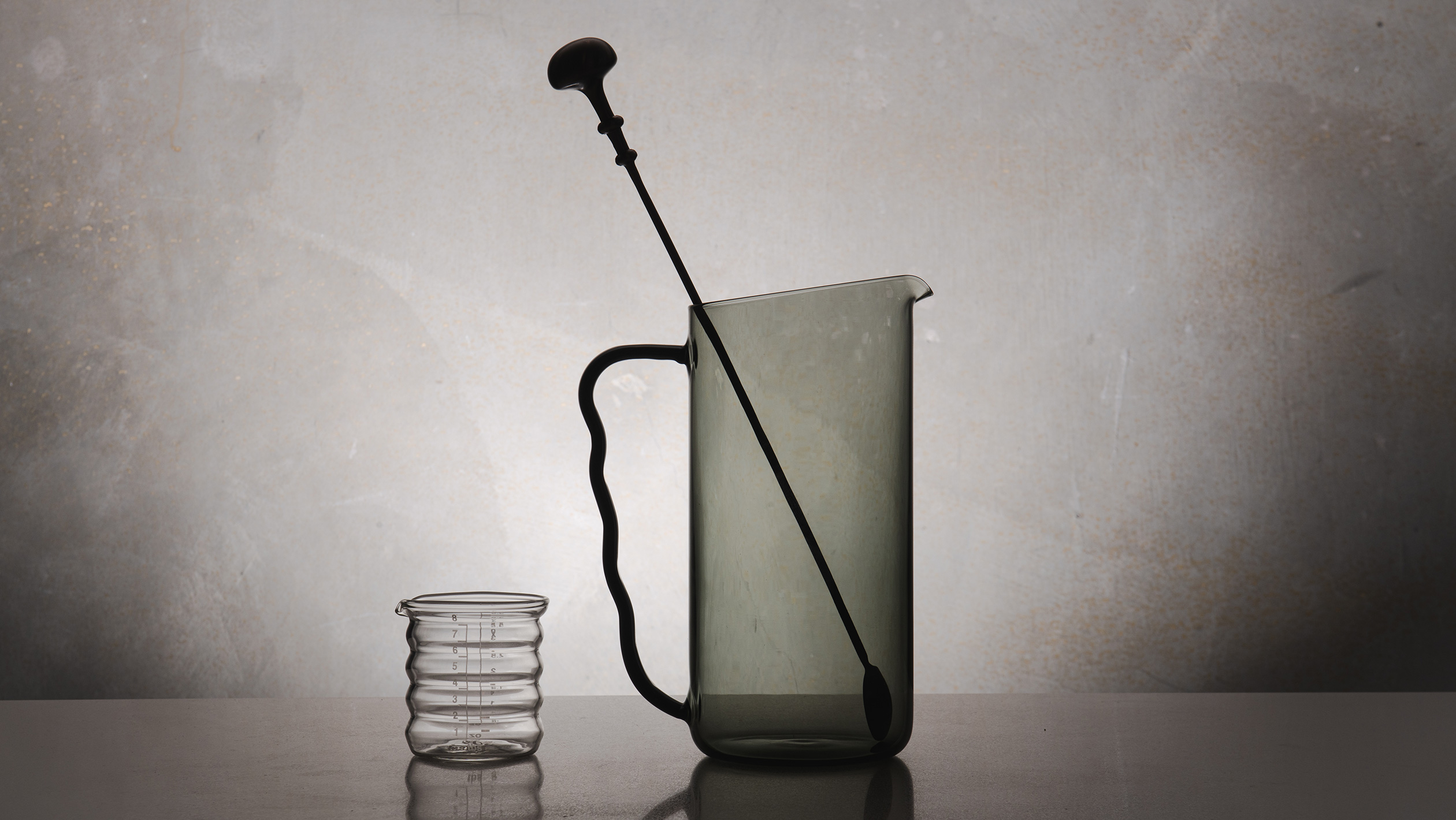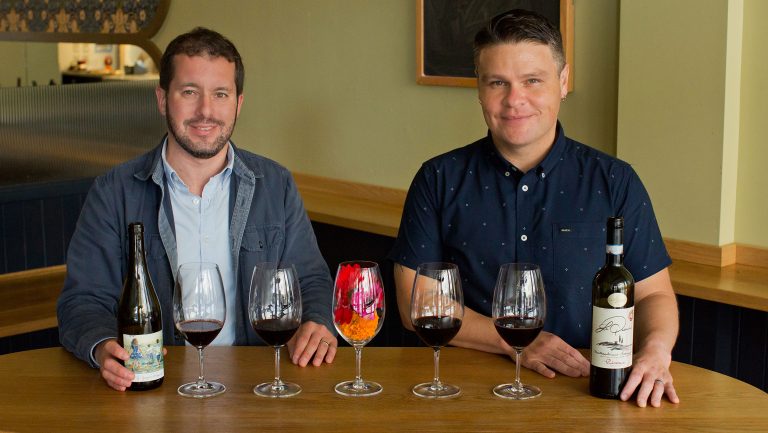Even some of the most popular bars can struggle with sustaining profitability. Developing merchandise for retail, like bespoke drinkware or branded shirts, offers another way to boost a bar’s revenue beyond the night’s check tally. Growing profits like this demands added costs, whether that means upfront investments in inventory or hiring a merchandise manager, but if done thoughtfully, the results can be a boon.
“In business, one thing informs the next, then that informs the next. It builds momentum until you’re operating under its own energy,” says Dave Kaplan, the CEO of Gin & Luck, the parent company of Death & Co, which operates the standalone Death & Co Market. “The more we open successful cocktail bars, [the] more demand is created for the material we create. Retail items create more awareness, more fans and customers, and more business success.”
For bars with an established following—like Death & Co, Dead Rabbit, and Broken Shaker—expanding to a second, or even multiple, locations, or releasing a beverage line, can be a viable next step to growing the company, but before committing to projects of this scale and expense, developing a retail component can help build the bar’s brand and boost both visibility and profit.

Don’t miss the latest drinks industry news and insights. Sign up for our award-winning newsletters and get insider intel, resources, and trends delivered to your inbox every week.
“Business owners want something to differentiate themselves, then they have something to monetize on the back end,” says Annie Blake, the executive vice president of sales for Cocktail Kingdom, a barware manufacturer and distributor founded by Greg Boehm. He also founded Miracle and Sippin’ Santa Christmas pop-ups, which through its custom mugs have demonstrated the enormous potential of offering the right kind of merch to guests.
In our social-media-fueled era, retail items like these can also increase exposure, which ultimately moves bodies through the door, driving sales. “Guests want to post it and tag the bar on Instagram,” says Blake. “There’s a shift to bars being experiential. People want to feel involved in something different. It’s ever snowballing.”
SevenFifty Daily spoke to beverage professionals about how to harness this potential and what to consider when building out a retail program within an existing bar business.
Create Merchandise That Speaks to the Bar’s Identity
Ideating the right type of merch is essential. When Mary Allison Wright was developing a merch program she leaned in on the Rocky Mountain vibe of Yacht Club, the Denver bar she opened with her husband, McClain Hedges, in 2021. As such, she decided on including bolo ties with the venue’s name embossed on the medallion of the classic cowboy accessory along with the lineup of shirts and beanies.
“Don’t do cheap, don’t do rushed, don’t be swayed by massive price cuts,” she says. “Make it thoughtful and reflective of your brand because that’s what it’s representing. We designed bolo ties as a tribute to our roots. Plus, it’s cool to work with designers you like to create something and put it out there.”
Items that represent your brand creatively provide guests an option for a distinctive purchase versus just another t-shirt. At Traveling Mercies in Aurora, Colorado, chef and co-owner Caroline Glover calls her chore coats, which are screen-printed with the bar’s name, a passion project, as it takes time to source the specialty item on Etsy. The classic fishmonger’s uniform reflects the venue’s branding. “You want it to feel intentional. People want to be part of the story. People don’t buy it just because they saw it on Instagram,” she says.

If the brand is naturally integrated into the bar experience, even better. At the stylish, neon-lit Romeo’s in the East Village in New York City, owner-operator Evan Hawkins sells items like crop tops and denim sherpa jackets, which he calls “easy wins,” given the neighborhood’s young demographic. When the staff wears the tops, they become a living—and effective, he says—promotion for the product and the bar.
At the Dead Rabbit, the bar’s merchandise was originally based on the now-iconic rabbit around which the menus were designed, but Jack McGarry, the managing director of the Dead Rabbit Group, felt it was getting too commodified and gimmicky. These days he’s focused on sourcing artisanal goods and crafts from makers in Ireland. “It speaks better to our concept, which is to represent contemporary Ireland,” he says.
Sometimes retail tips over into the realm of lifestyle, as is the case with Death & Co, which sells a vast range of items on Death & Co Market from drinkware to nail polish and wall art. “We do products for the cocktail-culture space,” says Kaplan. “It’s more than tools and branded items. It asks: ‘What is Death & Co if it’s a lifestyle?’” He notes that the market generates more than $600,000 in net sales annually.
They also lend their brand name to other companies through collaborations, like this barware set for kitchenware design store Material. “Because we can do unique collaborations, we can sell micro-facets of our brand [and] the lifestyle. It gives people different entry points to the bar experience and our world. All that helps with everyday business and longevity and integrity,” says Kaplan.
A Bar’s Merch Should Speak to its Setting
Most guests who visit the surf-themed Sunset Club on Plum Island, Massachusetts, are on vacation. And in the summer, some neglect to pack warmer clothes for the chilly evenings. That’s where the bar’s hoodies come in.
“About 95 percent of our guests are from out of town. People want to buy something to commemorate the vacation,” says Emma Hollander, a partner and director of operations for Starlight Management, which runs Sunset Club and several bars in and around Boston.
“We do a lot of work with tourist markets; you’re going to higher volume with transient people,” says Blake. In addition to selling bartending tools, Cocktail Kingdom is a go-to for bespoke products, from custom barware to kits for cocktail classes.
John Moore, the owner of Forgotten Tonic located on a busy tourist street in St. Augustine, Florida, can attest. The custom mug he designed in collaboration with Cocktail Kingdom is based on a statue of a historic local figure. “I wanted something tied to local history that people could take home, not just a silly shot glass,” Moore says. “And paying homage to the town works for social media, too.”
The Challenge of Inventory and Storage
The upfront capital for buying inventory is no small sum. A t-shirt, for example, can end up being many SKUs since it’s advantageous to keep sizes on the premises, both on display and in storage for replenishment. The more items you order, the less expensive it gets, and many bars work on a 50 percent markup, so the potential for payoff is there. Wright suggests, however, starting small, otherwise you sit on thousands of dollars of merch.

“Selling out is a good thing. The scarcity model works,” agrees Carlos Quirarte, a partner at Authentic Hospitality, which owns Ray’s, a retro-style bar with a location in Manhattan and Brooklyn. It started selling merch, like trucker hats, as soon as they opened in 2019. They’ve sold out in the past, and as per the standard supply and demand rules, no and low inventory boosted the items’ street cred.
A physical display takes strategy—and space. “If it’s a physical presence that’s thoughtful and integrated into the design of the bar’s layout, there’s great opportunity,” says Kaplan, noting that it can become part of the bar’s experience. However, there are drawbacks, like theft and distraction. “People were asking team members if they could try stuff on and essentially taking staff away from executing hospitality—great drinks, the food experience, the core of our business,” says McGarry. “Then bathrooms were being repurposed as fitting rooms.” He moved merch sales from an in-house display to online.
Online sales eliminate the need for space, and by using third-party e-commerce companies, like CraftWork Design Co or Printful, which offer print-on-demand, it eliminates the upfront capital investment, too. These companies take care of the logistics (for a cut), and allow you to choose your markup and create discount codes to offer as perks.
Utilizing e-commerce platforms, however, doesn’t take away from the need for promotion, which requires strategy and time. Social media is a valuable tool here, as are QR codes, which can be put on coasters or menus taking guests right to the retail page. But, ultimately, as Kaplan says, “You really have to constantly keep your foot on the gas to drive sales online.”

Dispatch
Sign up for our award-winning newsletter
Don’t miss the latest drinks industry news and insights—delivered to your inbox every week.
Liza Weisstuch is a New York City-based journalist whose work has appeared in The New York Times, The Washington Post, The Daily Beast, Bon Appetit, Robb Report, and The Wall Street Journal, among others. She is the U.S. contributing editor to Whisky Magazine. You can reach her on Instagram (@livingtheproof) and X (@livingtheproof)






